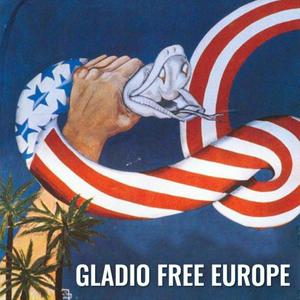E108 American Utopias and the New Moral World ft. Grace Cathedral Park
Support us on Patreon---"And all that believed were together, and had all things common; And sold their possessions and goods, and parted them to all men, as every man had need." King James Bible, Acts 2:44"And when they found them not, they drew Jason and certain brethren unto the rulers of the city, crying, These that have turned the world upside down are come hither also." King James Bible, Acts 17:6Liam and Russian Sam are joined by once again by Jackson (@GraceCathedralPark) for a two thousand summary of American radicalism and the utopian tradition. Since ancient times, religious and moral conviction has compelled the most pious among us to leave this sinful world behind.Jewish groups like the Essenes and the Ebionites were joined by the earliest Christian monks in their complete rejection of secular society, preferring to live in intentional communities organized toward complete observance of religious commandments. These groups, who may have included the first followers of Jesus, held their property in common and believed they could lead mankind by their example toward a new moral world.By the European Middle Ages, Christian institutions had taken on all the venal and violent obligations of the state. Reformers seeking to challenge the worldly power of the church were met by centuries of brutal oppression. By the 16th century these contradictions had become too much to bear, with the eruption of the Protestant Reformation and the flowering of idealistic sectarians. Some of these groups, like the Anabaptists and the Diggers, sought to upend the material hierarchies of man and make all equal before God. When these groups were also hunted down, even by their fellow Protestants, the dream of a new beginning survived across the sea.Religious settlers like the Puritans and Quakers saw the wild American lands as a blank slate for their moral dreams, while more materialistic colonists used the New World to engineer new systems of extraction and domination unimaginable back home. Many of these groups created communes in the wilderness, some surviving for months and others for centuries. As Enlightenment writers argued for the equality of man based on reason rather than scripture, and the American and French Revolutions called all political secular communitarian projects also began to emerge. Most significant of all of these was New Harmony, the utopian experiment of reformed capitalist and lifelong idealist Robert Owen. Though New Harmony would not be a particularly long-lived commune, it cemented Owen as one of the most famous men of the early 19th century and a father of the socialist movement. Like many parents, Owen would see some of his children turn away from him, yet his lifelong agitation would lay the groundwork for more enduring transformative projects. While we now understand the utopian movement to have failed, Owen and his two thousands years of forebears succeeded in inspiring mankind to build a new moral world.Listen to the end of this one to hear about Jackson's own radical utopian dream: BYU for Owenism.
